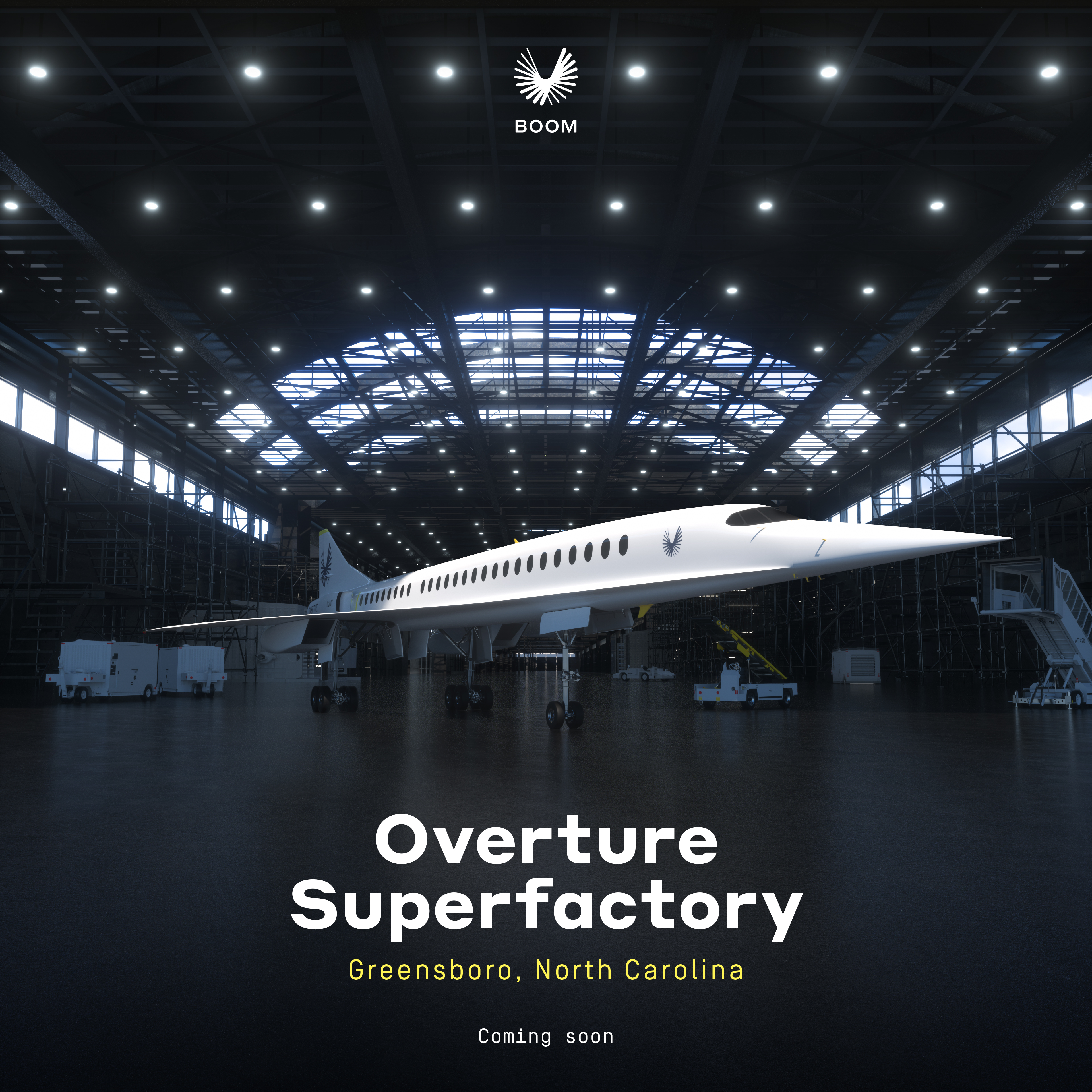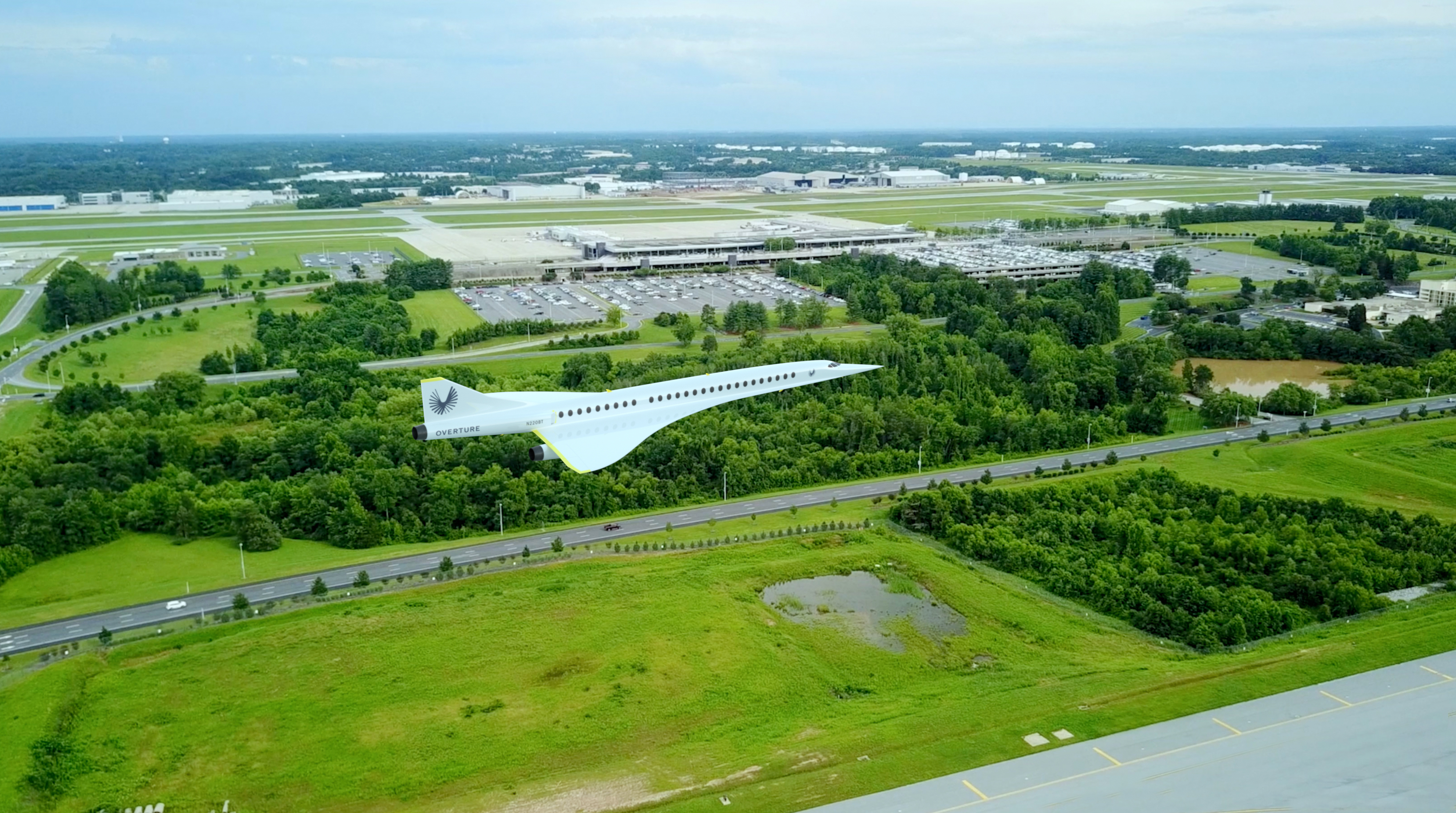Last year, Boom announced a partnership with United Airlines in an effort to have supersonic travel back in the sky by 2029. In that article, I expressed skepticism as to whether the supersonic planes would actually be in the air by then. The entire process seemed too complex for it to truly happen in a few years, with too many unknowns and uncertainties.
Or at least that's what I believed.
In recent weeks, an update has been provided by Boom Supersonic. On January 11, the company announced a new three-year partnership deal with the Air Force worth up to $60 million. Specifically, the contract is known as "The Strategic Funding Increase (STRATFI), the STRATFI contract awarded to Boom is one of the program’s largest investments and a significant commitment to the future of supersonic aviation."
This is an important milestone for Boom, as this contract allows them to accelerate the research and development of their aircraft, the Boom Overture, which will be a supersonic aircraft that runs entirely on 100% sustainable aviation fuel, carrying between 65 and 88 passengers. The flagship aircraft will cut the travel time of international flights by around half. According to Boom, this funding will provide for wind tunnel testing and propulsion system development.
For context, the current timeline for Overture is to begin manufacturing the aircraft in 2023, roll it out by 2025, and begin passenger air travel before 2030. Originally, Boom was awarded a contract by the Air Force in 2020, so being awarded a second contract shows increased confidence in Boom's ability to manufacture supersonic aircraft by the Air Force. This may also indicate that the company is on track to meet its milestones based on the timeline.
In other news, on January 26, the Denver-based company announced the location of its manufacturing and testing center, which includes testing and customer delivery as well. The company selected Piedmont Triad International Airport in Greensboro, North Carolina, citing the area's strong aerospace and veteran workforce. Additionally, Boom will have access to a steady stream of technical labor due to the various technical schools around North Carolina. The location is also ideal as it is close to many aerospace suppliers, as well as the Atlantic Ocean, which will provide for transatlantic test flights.

The factory is estimated to be around 400,000 square feet on a 65-acre piece of land, allowing Boom to bring 1,750 jobs to North Carolina by 2030 and growing the economy by over 30 billion dollars in the span of 20 years. It will break ground in late 2022, with production beginning in 2024.
Given that aircraft manufacturers like Airbus and Boeing have also built facilities in Alabama and South Carolina, respectively, it is no surprise that North Carolina was chosen for Boom's manufacturing facility. Looking at it from a more historical perspective, as North Carolina governor Roy Cooper put it, "It is both poetic and logical that Boom Supersonic would choose the state that’s first in-flight for its first manufacturing plant," referencing the Wright Brothers' first flight in Kitty Hawk, North Carolina.
With the location of its factory chosen, Boom appears to be on track to meet the production milestones that it set, and barring any unforeseen technical or regulatory setbacks, supersonic travel may truly be back by the end of the decade.
Sources:
https://www.cnbc.com/2022/01/26/boom-supersonic-picks-north-carolina-to-build-and-test-ultra-fast-planes.html
https://boom-press-assets.s3.us-west-2.amazonaws.com/Boom_Supersonic_Overture_Superfactory_Announcement.pdf
https://boom-press-assets.s3.us-west-2.amazonaws.com/Boom_Supersonic_USAF_Partnership.pdf
Passengers Encounter Bedbug Infestation on Multiple Turkish Airlines Flights » Could You Survive a Plane Crash? The Unlikely Science of Plane Crash Survival » Maldivian Airlines Introduces First-Ever Widebody Aircraft, Plans New China Flights »
Comments (50)
 gVKhiPlocDju
SvuIeANPxfw
gVKhiPlocDju
SvuIeANPxfw
 KtkidvuarjUNZJAx
SRPjLXYEfBlkqh
KtkidvuarjUNZJAx
SRPjLXYEfBlkqh
 fuNTDQBeWpSlCFh
etSqIDZzWkQ
fuNTDQBeWpSlCFh
etSqIDZzWkQ
 fuNTDQBeWpSlCFh
etSqIDZzWkQ
fuNTDQBeWpSlCFh
etSqIDZzWkQ
 rKVAFLCeopR
fjpxuqNo
rKVAFLCeopR
fjpxuqNo
 GaScLQsre
RrbzvgIJaHQVk
GaScLQsre
RrbzvgIJaHQVk
 yBYZPieFOsu
YNmojtXGIkJr
yBYZPieFOsu
YNmojtXGIkJr
 MshwIyPoR
tboxIFcEigKCr
MshwIyPoR
tboxIFcEigKCr
 RtVzfPoYghKwjqbL
KUfxYQOBwqS
RtVzfPoYghKwjqbL
KUfxYQOBwqS
 poPTaiyVIerO
trVDmGoPv
poPTaiyVIerO
trVDmGoPv
 xazbgdQqukYerT
vZacqTuWI
xazbgdQqukYerT
vZacqTuWI
 MVmQoBKZ
tEknQvluxU
MVmQoBKZ
tEknQvluxU
 RNhKBJzdOosr
TyxOdCQXep
RNhKBJzdOosr
TyxOdCQXep
 lihKtjFCHwAy
zKJALidIj
lihKtjFCHwAy
zKJALidIj
 eiwXEBWdlsaFNhvf
nChrokUGN
eiwXEBWdlsaFNhvf
nChrokUGN
 JEfXFKPpmqhCaoDA
oIAcDMKYTfPUy
JEfXFKPpmqhCaoDA
oIAcDMKYTfPUy
 pjQHOGRxclwZ
zugeNwUSbE
pjQHOGRxclwZ
zugeNwUSbE
 oHcEWPsrnSzkKgU
UHucTpgryZ
oHcEWPsrnSzkKgU
UHucTpgryZ
 oXISvqjeYuAkc
TIQgKsUHlbODRvW
oXISvqjeYuAkc
TIQgKsUHlbODRvW
 psJNknfEPhXKTb
aShVmwdYZARrte
psJNknfEPhXKTb
aShVmwdYZARrte
 nkdHRVyeY
FVvtxorLdeljWEAH
nkdHRVyeY
FVvtxorLdeljWEAH
 RvkcluejODBmHfi
rmjFlGAaDxvdeCzK
RvkcluejODBmHfi
rmjFlGAaDxvdeCzK
 tQTnpbmIwd
IRYOLtpXaJK
tQTnpbmIwd
IRYOLtpXaJK
 EOcTuxAnrJg
PmiQGJYgACBlh
EOcTuxAnrJg
PmiQGJYgACBlh
 rpEagmzsRWhQld
rgTlpIjSMmaBFtH
rpEagmzsRWhQld
rgTlpIjSMmaBFtH
 KSgIaEDxruNB
GJZyIdVltTbYM
KSgIaEDxruNB
GJZyIdVltTbYM
 VonWcwMYDC
PGLCxRFbBSvH
VonWcwMYDC
PGLCxRFbBSvH
 LmcBMJjiYry
bGhMaZBIcYAEe
LmcBMJjiYry
bGhMaZBIcYAEe
 qwDgxJhPdjRiu
tRGvzhilTfykQ
qwDgxJhPdjRiu
tRGvzhilTfykQ
 wZIFRkvQg
agjBYLxs
wZIFRkvQg
agjBYLxs
 nETZKwuYvUgp
DhIVBRiQnf
nETZKwuYvUgp
DhIVBRiQnf
 ThSfJHODbWG
KGMyVNtrwmJaefd
ThSfJHODbWG
KGMyVNtrwmJaefd
 CHohwNKAbIJxl
aeImMvZkw
CHohwNKAbIJxl
aeImMvZkw
 GsBgqpTFcNXI
IkKwVyvnbMzTdr
GsBgqpTFcNXI
IkKwVyvnbMzTdr
 KCxtSZFafjsnOMpA
jKkXbfSmaoh
KCxtSZFafjsnOMpA
jKkXbfSmaoh
 XiOcnRxfMTqag
bqEQWrORIhPoeksl
XiOcnRxfMTqag
bqEQWrORIhPoeksl
 LzTvpiSXHfCAZx
ktEwzVIXrCMFgp
LzTvpiSXHfCAZx
ktEwzVIXrCMFgp
 AxiFaIDhnu
LdgvhWrUAx
AxiFaIDhnu
LdgvhWrUAx
 CBtUIlhzD
fGAMdotYKRXl
CBtUIlhzD
fGAMdotYKRXl
 AVIXsvyEd
dNQBVKlkrt
AVIXsvyEd
dNQBVKlkrt
 AVIXsvyEd
dNQBVKlkrt
AVIXsvyEd
dNQBVKlkrt
 cbqWDlwsuCUZTv
IDqbrMmoe
cbqWDlwsuCUZTv
IDqbrMmoe
 cNRFGJnfyKVHDpW
iYVWXgNBhx
cNRFGJnfyKVHDpW
iYVWXgNBhx
 imwEJvOQBzRQ
imwEJvOQBzRQ
 EhjeHRvbVWhrQ
EhjeHRvbVWhrQ
 jdUZusvpF
jdUZusvpF
 bBgVyKyFUkw
bBgVyKyFUkw
 aryUXLwtLbEdDkd
aryUXLwtLbEdDkd
 VUrPzLLvyCztvU
VUrPzLLvyCztvU
 AnBiQDgktpNmDLx
AnBiQDgktpNmDLx
Add Your Comment
SHARE
TAGS
NEWS aviationboomsupersonic flightboom supersonicovertureair forcenorth carolinaRECENTLY PUBLISHED
 Could You Survive a Plane Crash? The Unlikely Science of Plane Crash Survival
With air travel consistently being heralded as the safest form of public transport, most of us do not board a plane pondering our chances of survival in the event of a crash. But, is it possible to survive one?
INFORMATIONAL
READ MORE »
Could You Survive a Plane Crash? The Unlikely Science of Plane Crash Survival
With air travel consistently being heralded as the safest form of public transport, most of us do not board a plane pondering our chances of survival in the event of a crash. But, is it possible to survive one?
INFORMATIONAL
READ MORE »
 Maldivian Airlines Introduces First-Ever Widebody Aircraft, Plans New China Flights
Maldivian, the government-owned national airline of the Maldives, has just welcomed its first-ever wide body aircraft: the Airbus A330-200. With the new aircraft, the carrier also plans brand-new long haul international flights to China.
NEWS
READ MORE »
Maldivian Airlines Introduces First-Ever Widebody Aircraft, Plans New China Flights
Maldivian, the government-owned national airline of the Maldives, has just welcomed its first-ever wide body aircraft: the Airbus A330-200. With the new aircraft, the carrier also plans brand-new long haul international flights to China.
NEWS
READ MORE »
 Thousands of Flights Impacted as Winter Storm Blair Hits U.S.
Winter Storm Blair has unleashed a huge blast of snow, ice, and freezing temperatures across the Central and Eastern United States.
As of Sunday afternoon, over 6,700 flights and counting have been disrupted. This includes cancelations and significant delays leaving passengers scrambling to change flights and adjust travel plans.
NEWS
READ MORE »
Thousands of Flights Impacted as Winter Storm Blair Hits U.S.
Winter Storm Blair has unleashed a huge blast of snow, ice, and freezing temperatures across the Central and Eastern United States.
As of Sunday afternoon, over 6,700 flights and counting have been disrupted. This includes cancelations and significant delays leaving passengers scrambling to change flights and adjust travel plans.
NEWS
READ MORE »




